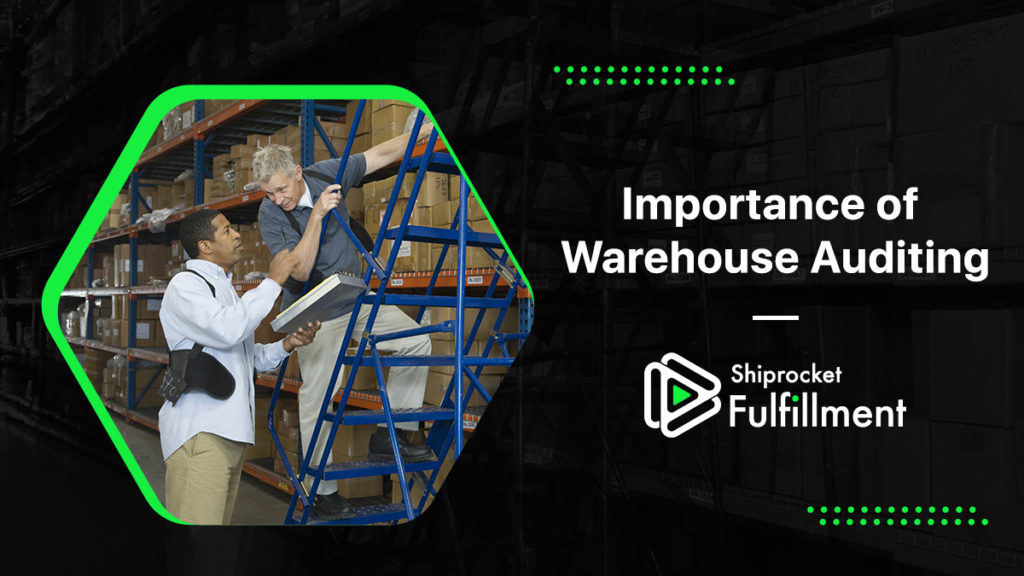Understanding Warehouse Auditing and Its Importance
According to a report by Industrial Property, the logistics sector in India is expected to touch US$200 billion by 2020 & India’s warehousing requirement was expected to grow at an annual average rate of 9% to 1,439 million sq. ft in 2019 from 919 sq. ft in 2014.
This means that the growth of warehousing in India is fast, and development is fueled by innovation and rearrangement of existing practices. But how do you ascertain that it is time to take your business to the next level, and where do you start? If your warehouse is not performing up to the mark, how do you analyze the performance and identify changes wherever necessary?
A complete audit of your warehouse enables you to dig deeper and come up with strategies to improvise. Many companies do not consider the audit as an integral part of their strategy. Regular audits give you an insight and a 360° view of your business and help you make crucial decisions. An audit is an essential tool you have if you want to grow.

With this article, we will identify the importance of a warehouse audit and how it can help you enhance your business.
What is a Warehouse Audit?
For a wholesaler or retailer, a warehouse is the most critical location in the fulfillment chain. It is where most of the essential activities like storage and inventory management take place. If these are not in order, the entire order management process can fall apart, leading to a delay in the fulfillment operations. Ultimately, this can lead to a negative customer experience too. To grow, you need to keep innovating your strategies and incorporate new elements into your warehouse technology.
A warehouse audit is a more in-depth look into all the operations, equipment, processes, and personnel to assess and evaluate the performance and output. With the help of these insights, you can identify gaps and make better-informed decisions about the warehouse.

Let’s study how a warehouse audit is carried out and why it is essential for any warehouse.
Steps Involved in Warehouse Auditing
An audit involves very minute digging and analysis of every aspect of the warehouse. Hence, it is an intensive process that has several steps. Here are a few steps that you can follow for conducting a successful audit of your warehouse –
List The Aspects of a Warehouse
The warehouse is made up of several smaller elements and operations that make a warehouse operational when combined. Before starting with an audit, list down the different aspects of a warehouse and the processes that are carried out in it. For example, your warehouse could have storage, inventory management, and distribution operations. Understand the various aspects of warehousing and carry out the audit in a systematic manner.
Also, set the objectives for your audit and conduct it thoroughly to derive actionable results.
Inventory Audit
The next significant aspect of any warehouse is the inventory stored in it. The inventory needs to be organized in an easily accessible manner so that it is in perfect sync with the stock lists, listings, and a centralized panel, if any. An inventory audit would include the physical inventory count and tallying it with the inventory management system to ensure that the right number is being followed on all channels and out of stock products are not listed.
The inventory management system ensures the correct functioning of order management and reduces error. Hence, a physical inventory count is necessary during an audit.

Warehouse Operations Scan
The next step in a warehouse audit is the operation scan, where each operation of the warehouse is assessed individually. These include the audit of operations like picking, packaging, shipping, etc. The entire process, technology, and personnel are looked into to ensure that the efficiency and effectiveness are optimized. The entire eCommerce fulfillment operation chain must be analyzed properly. Regular check ensures the proper functioning and helps identify any lacking.
Risk Assessment Overview
Following this, the risk assessment is done to check whether the risk mitigation strategies are in place and if they require any intervention. Since warehouses require a lot of manual work, the conditions must be optimized to make it less risky for resources and labor. The technology, equipment, and safety practices need to be looked into thoroughly, and changes need to be made wherever possible.
Employee Interviews
A warehouse is nothing without the skilled labor that facilitates operations, and their work mustn’t be hampered due to the conditions in the warehouse. Therefore, employee interviews are essential to understand the shortcoming on the ergonomic and human front so that all operations are correctly human-crewed and maximized success.
Process Control
A more in-depth look into each warehouse management process and distribution can help you identify the best practices for each and pave a path to work on core competencies. Start by analyzing the steps involved in each process and identifying the areas where you can improve; also, understand each technology’s functioning and establish if you should require new technology and equipment for the current operations.
Cost Control
Assessing their investments and costs is also essential for any warehouse. A complete look into the amount spent on the warehouse and its turns can better understand how you must invest your money. Redundant operations must be eliminated, and best practices and innovative technology must be adopted to grow your warehouse.
Audit Evaluation
The last step of the audit is the audit evaluation. A team must be put in place to evaluate whether the audit was carried out following all procedures and standard practices and determine authenticity. This will help establish transparency and derive the best results for your warehouse.
Why is Warehouse Audit Important?
Employee Motivation
Your employees are the essential resources in your warehouse. They run the operations. Therefore, regular audits within the warehouse will give the employees confidence that their interests are being looked into, and several assessments are carried out for their safety and well-being.
Check Safety Practices
Regular warehouse audits can save you from potential hazards and also help you escape accidents. They put you in charge of your facility, and you can examine every practice that is carried out to ensure that maximum safety is carried out and maintained at all points.
Efficient Workflow
To attain maximum results, your workflow must be efficient, and it does not lack at any point. Internal audits can help you establish this workflow by analyzing every operation closely and identifying the workflow process gaps and operating procedures. It can help you innovate with rich insights and bring into place more advanced systems if required.
Assess Technology
An internal audit also gives you a chance to assess the technology and equipment you have in your warehouse and regularly check its functioning. If your machines are not working correctly, you can know this information early on with audits. An audit will also give you the knowledge to decide about purchasing new equipment or technology to grow.
Improve Customer Satisfaction
Finally, an audit will give you the information you need to improve your strategy and optimize your operations to lead to customer satisfaction ultimately. Therefore, if not directly, audits do have an impact on employee and customer satisfaction.
Conclusion
An auditing committee is one of the most vital aspects of any organization, be it warehousing, eCommerce, retail, or any other business. It might come off as a redundant process, but it does add a lot of value to your decision-making and strategizing process. Therefore, ensure that you put an audit team into place to look into every aspect of your warehouse carefully.







